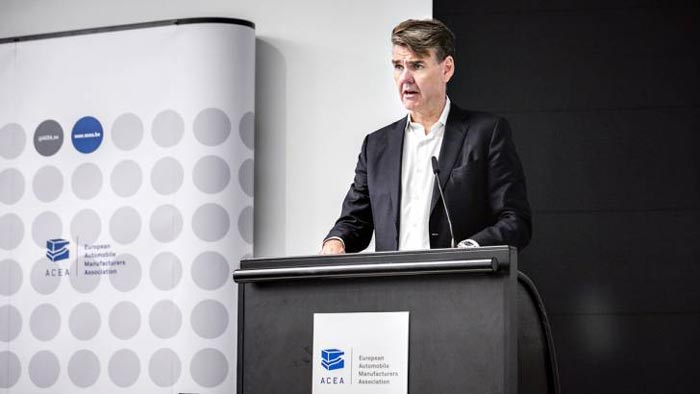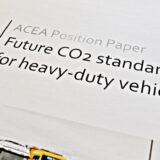
ACEA urges EU member states “to adopt viable approach” for EU’s first truck CO2 standards
The European Automobile Manufacturers’ Association (ACEA) is calling on the governments of EU member states “to adopt a well-balanced and viable approach” to the EU’s first CO2 standards for trucks, which will have a huge impact on the future of the heavy-duty vehicle industry in the European Union.
The European Commission published its proposal on future CO2 standards for new heavy-duty vehicles in May 2018, which the European Parliament voted on in November. The next step is for member states to adopt their common position so that trilogue negotiations can commence. This is expected to happen at the Environment Council meeting on 20 December 2018.
“There is no doubt that climate change is a fundamental challenge, requiring efforts to cut CO2 emissions from all sectors. The EU truck industry is fully committed to play its part,” said Joachim Drees, CEO of MAN Truck & Bus and chairman of ACEA’s Commercial Vehicle Board of Directors, at a press conference in Brussels, Belgium.
“To this end, we urge member states to ensure that the right framework conditions are in place for this regulation. Providing the necessary recharging infrastructure, as well as incentives for early investments in new technologies and effective support for the market penetration of zero- and low-emission trucks will be key prerequisites to deliver on ambitious CO2 targets, and to encourage our customers to buy cleaner vehicles.”
The CO2 reduction levels proposed by the European Commission in May – minus 15% in 2025 and minus 30% in 2030 – set a path towards reaching the Paris Climate Agreement objectives.
However, these levels are highly ambitious and will require a rapid and large-scale deployment of new powertrain technologies – many of which are not yet readily available for a widespread market introduction, according to ACEA, the Brussels-based trade association of the 15 major car, van, truck and bus producers in Europe.
“While using electrical power for a delivery truck operating in urban environments can make sense, a scenario where electric is the right choice for long-haul operations across Europe is much less likely in the mid-term, or even in the long run,” said Drees.
“Whatever the vehicle segment – long-haul, regional or urban delivery – a stronger market uptake of alternatively-powered trucks requires some basic conditions to be in place, many of which are outside the control of our industry and still lacking today.”
These include adequate investments in charging and refueling infrastructure, as well as a rapid fleet renewal by transport operators.
ACEA said it supports the European Commission’s idea of introducing specific incentives to stimulate innovation and the uptake of alternatively-powered trucks (the so-called ‘super-credit’ system). However, “it is very concerned that this could be adapted to include a ‘malus’, which would penalise manufacturers who do not sell a mandatory quota of zero- and low-emission trucks.”
“Given the obstacles zero-emission trucks currently face – lack of infrastructure, loss of payload, limited range, higher costs – it will not be easy to convince customers to buy these trucks. Policy makers need to be aware that forcing manufacturers to provide a certain supply of zero-emission vehicles when there is insufficient market demand would be extremely risky for Europe’s truck industry,” Drees said.
Another concern ACEA has is that the proposals on the table also include massive penalties for manufacturers who are unable to reach the targets.
“We are not at all against the principle of paying penalties in case of excess CO2 emissions,” Drees said. “But we are concerned about the disproportionate amounts being proposed.”
Based on these, a truck manufacturer that exceeds its target by just one gram of CO2 would have to pay hundreds of millions of euros.












